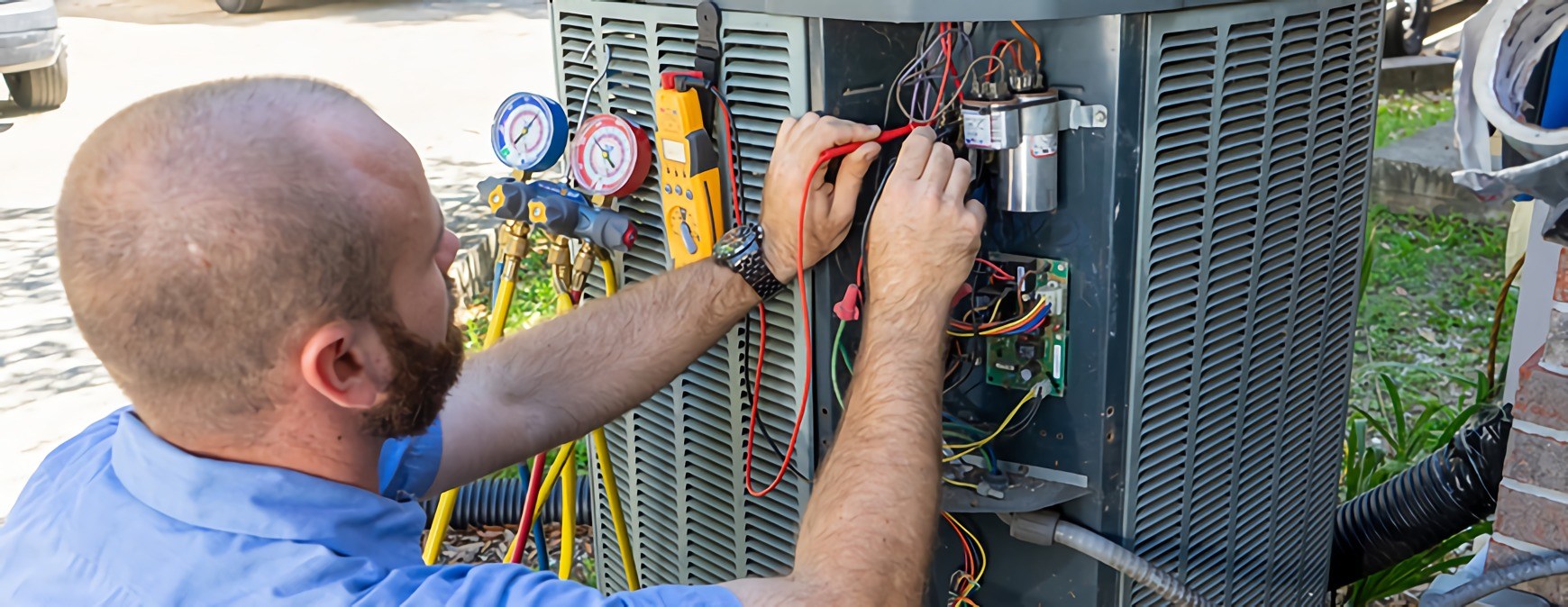HVAC Maintenance Checklist - HouseLogic


Germicidal UV for HVAC systems [Pros and cons]
Rumored Buzz on Construction Trades - GateWay Community College - Phoenix
/friedrichminisplit-56a4ecf05f9b58b7d0d9f080.jpg)
The heat can be transferred to the surrounding air utilizing radiators, hot water coils (hydro-air), or other heat exchangers. I Found This Interesting may be mounted on walls or installed within the flooring to produce floor heat. Making use of water as the heat transfer medium is referred to as hydronics. The heated water can also supply an auxiliary heat exchanger to provide warm water for bathing and washing. Warm air systems disperse heated air through duct systems of supply and return air through metal or fiberglass ducts. Lots of systems utilize the exact same ducts to disperse air cooled by an evaporator coil for a/c.
![Germicidal UV for HVAC systems [Pros and cons]](https://sgcc74adweujq0cm4726gsyr-wpengine.netdna-ssl.com/wp-content/uploads/2018/11/TECH-heat-pump-HVAC-unit-outside-BIGSTOCK-1080x675.jpg)
The Relationship Between COVID-19 And HVAC
Insufficient combustion takes place when there is insufficient oxygen; the inputs are fuels containing various pollutants and the outputs are damaging byproducts, the majority of alarmingly carbon monoxide, which is an unsavory and odor-free gas with major negative health impacts. Without proper ventilation, carbon monoxide gas can be lethal at concentrations of 1000 ppm (0. 1%). However, at numerous hundred ppm, carbon monoxide gas direct exposure causes headaches, tiredness, nausea, and throwing up. Carbon monoxide gas binds with hemoglobin in the blood, forming carboxyhemoglobin, reducing the blood's ability to transfer oxygen. The main health issues associated with carbon monoxide exposure are its cardiovascular and neurobehavioral impacts. Carbon monoxide gas can cause atherosclerosis (the hardening of arteries) and can also activate heart attacks.

HVAC and refrigeration - Festo USA
It can likewise affect time discrimination. Ventilation is the process of altering or replacing air in any area to control temperature or remove any mix of moisture, smells, smoke, heat, dust, airborne bacteria, or co2, and to replenish oxygen. Ventilation often describes the intentional delivery of the outdoors air to the structure indoor space. It is one of the most essential aspects for keeping appropriate indoor air quality in buildings. Methods for aerating a structure might be divided into mechanical/forced and natural types. A/C ventilation exhaust for a 12-story building Mechanical, or required, ventilation is supplied by an air handler (AHU) and utilized to manage indoor air quality.
